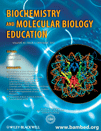
BIOCHEMISTRY AND MOLECULAR BIOLOGY EDUCATION
Scope & Guideline
Advancing education in the dynamic world of molecular biology.
Introduction
Aims and Scopes
- Innovative Teaching Strategies:
The journal promotes the development and assessment of novel teaching methods, such as gamification, inquiry-based learning, and collaborative projects, aimed at improving student outcomes in biochemistry and molecular biology. - Integration of Research and Education:
It emphasizes the importance of incorporating research experiences into undergraduate education, enabling students to engage in hands-on learning and apply theoretical knowledge in practical settings. - Use of Technology in Education:
The journal explores the application of technology, including online tools, virtual labs, and multimedia resources, to enhance learning experiences and adapt to changing educational environments. - Interdisciplinary Approaches:
It encourages the integration of concepts from various scientific disciplines, fostering a broader understanding of biochemistry and molecular biology within the context of health, environment, and society. - Assessment and Feedback Mechanisms:
The journal discusses effective assessment strategies and feedback mechanisms that support student learning and help educators refine their teaching practices.
Trending and Emerging
- Blended and Online Learning Models:
There is a growing focus on blended and online learning strategies, particularly in response to the COVID-19 pandemic, highlighting the effectiveness of combining in-person and virtual educational experiences. - Active Learning and Engagement Techniques:
Innovative active learning methods, such as problem-based learning and gamification, are trending as educators seek to enhance student engagement and foster deeper understanding of complex biochemical concepts. - Use of Data and Computational Tools:
Increased emphasis on the integration of data science and computational tools into biochemistry education is emerging, preparing students to navigate and analyze large datasets in their future careers. - Interdisciplinary Learning Experiences:
There is a rising trend towards interdisciplinary courses that connect biochemistry with other scientific fields, such as environmental science and medicine, to provide students with a holistic understanding of the subject matter. - Focus on Diversity, Equity, and Inclusion (DEI):
Emerging themes around DEI in education are prominent, as the journal encourages discussions and research on creating inclusive learning environments that cater to diverse student populations.
Declining or Waning
- Traditional Lecture-Based Methods:
There is a noticeable decline in research focused solely on traditional lecture-based teaching methods, as the journal increasingly highlights active, student-centered learning approaches that promote engagement and critical thinking. - Non-Interactive Assessment Techniques:
The journal has seen fewer studies on conventional assessment methods that do not incorporate interactive or formative feedback, reflecting a move towards more dynamic and responsive evaluation techniques. - Limited Focus on Basic Biochemistry Content:
Papers addressing fundamental biochemistry topics without innovative teaching approaches or integration with current scientific advancements are becoming less frequent, indicating a trend towards more complex and applied educational content. - Reduced Emphasis on Theoretical Frameworks:
The journal is shifting away from purely theoretical discussions in biochemistry education, favoring practical applications and experiential learning opportunities that better prepare students for real-world challenges.
Similar Journals
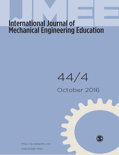
International Journal of Mechanical Engineering Education
Driving Innovation in Mechanical Engineering LearningThe International Journal of Mechanical Engineering Education, published by SAGE Publications Inc, serves as a premier platform dedicated to advancing the field of engineering education, with a specific focus on mechanical engineering. With a history dating back to 1981, this journal has established itself as a vital resource for researchers, educators, and industry professionals alike, offering insights and scholarly articles that foster innovation and improve pedagogical approaches within the discipline. The journal is currently indexed in Scopus, ranking #542 in Education and #311 in Mechanical Engineering, reflecting its significant contribution to both academic and engineering communities. Although it does not have open access options, the quality and depth of research disseminated through its pages are undeniable, making it an essential read for anyone involved in engineering education. With a Q3 categorization in both relevant fields as of 2023, the journal continually strives to enhance the learning experience and methodologies in mechanical engineering education, paving the way for a future generation of skilled engineers.

Research and Practice in Technology Enhanced Learning
Connecting theory and practice in educational technology.Research and Practice in Technology Enhanced Learning is a leading international journal dedicated to advancing the field of educational technology and its applications in various learning environments. Published in Taiwan, this journal has firmly established itself as an open-access platform for sharing innovative research, practical insights, and emerging trends since its inception in 2015. With an impressive Q1 ranking in Education and Media Technology for 2023, coupled with notable placements in the fields of Social Psychology and Management of Technology and Innovation, the journal underscores its significance in fostering interdisciplinary collaboration among scholars and practitioners. Its rigorous peer-review process ensures the publication of high-quality articles that contribute substantively to both theoretical and practical knowledge. The journal's commitment to open access enhances its visibility and accessibility, making it an invaluable resource for researchers, educators, and students seeking to explore the intersection of technology and learning.
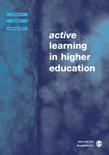
Active Learning in Higher Education
Exploring Cutting-edge Pedagogies for Student SuccessActive Learning in Higher Education is a premier journal dedicated to exploring innovative and effective pedagogical practices within the realm of higher education. Published by SAGE Publications Inc, this journal boasts an impressive Q1 ranking in the Education category for 2023, positioning it within the top percentile of academic journals in the field, with a Scopus rank of 21 out of 1543, reflecting its high impact and relevance. With coverage spanning from 2000 to 2024, the journal serves as a critical platform for researchers, educators, and students, providing insightful articles that delve into the theories, strategies, and technologies that enhance active learning experiences. While currently not open access, the enriching content is vital for anyone aiming to stay abreast of evolving methodologies and empirical studies in educational practices. Located in the United Kingdom, this journal is committed to advancing the academic discourse surrounding higher education, making it essential reading for those interested in fostering student engagement and learning outcomes.
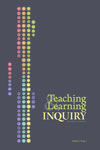
Teaching & Learning Inquiry-The ISSOTL Journal
Championing open access to transformative learning research.Teaching & Learning Inquiry-The ISSOTL Journal, published by UNIV CALGARY PRESS, is a premier open access journal dedicated to enhancing educational practices and fostering scholarly discourse in the field of teaching and learning. With an ISSN of 2167-4779 and E-ISSN 2167-4787, this journal has been at the forefront of educational research since its inception in 2013, operating within a converged timeframe until 2024. Recognized with a Q2 ranking in Education and classified within the 55th percentile of Scopus’ rankings for education-focused social sciences, the journal aims to disseminate original research, theoretical inquiries, and practical applications that contribute to the scholarship of teaching and learning (SoTL). As an open access publication since 2016, it ensures that vital research is widely accessible, making it a critical resource for researchers, educators, and students seeking to advance their understanding and practice in the dynamic landscape of education. Based in Calgary, Canada, the journal continues to engage with innovative perspectives that shape and define the educational experience, making it an essential read for anyone invested in the future of teaching and learning.

Computer Science Education
Advancing the Frontier of Computer Science LearningComputer Science Education is a prestigious journal published by ROUTLEDGE JOURNALS, TAYLOR & FRANCIS LTD, focusing on the critical intersection of computer science and educational practices. Established in 1988, this journal has become a cornerstone for researchers, educators, and practitioners interested in enhancing teaching methodologies and learning outcomes in computer science. With an impressive ranking within the top quartile (Q1) in both Computer Science (miscellaneous) and Education categories for 2023, as well as high Scopus percentile placements, it underscores its significance in advancing the discipline. The journal offers a platform for innovative research encompassing diverse educational environments and approaches, and while it currently does not offer open access options, it remains committed to disseminating high-quality scholarly work. As a vital resource for anyone looking to contribute to and understand the evolving landscape of computer science education, Computer Science Education continues to shape the future of learning in this dynamic field.
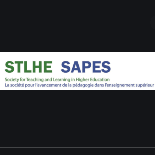
Canadian Journal for the Scholarship of Teaching and Learning
Championing Open Access to Teaching and Learning InsightsThe Canadian Journal for the Scholarship of Teaching and Learning (CJSoTL) is a premier open-access journal dedicated to advancing research and discourse in the field of teaching and learning within higher education. Published by SOC TEACHING & LEARNING HIGHER EDUCATION, CJSoTL serves as a vital resource for educators, researchers, and students alike, promoting evidence-based practices and scholarship in higher education pedagogy. Since its inception in 2010, the journal has provided an inclusive platform for innovative research, case studies, and pedagogical strategies that enhance teaching effectiveness and student learning outcomes. Although specific metrics such as H-index and Scopus ranks are currently unlisted, the journal is committed to fostering a community of practice among scholars dedicated to improving teaching and learning environments. With its open-access policy, CJSoTL ensures that valuable knowledge is freely available, aligning with contemporary trends in academic dissemination and accessibility, thus making significant contributions to the scholarship of teaching and learning in Canada and beyond.

Journal of University Teaching and Learning Practice
Pioneering Research to Enhance the University ExperienceWelcome to the Journal of University Teaching and Learning Practice, a premier publication dedicated to advancing research and practice in higher education. Published by UNIV WOLLONGONG, this journal provides a vital platform for educators, researchers, and practitioners to explore innovative teaching methodologies and learning strategies to enhance the university experience. With an impressive impact factor and categorized in the Q2 quartile for Education in 2023, this journal ranks in the top percentile of educational research, boasting a Scopus rank of 437 out of 1543 in Social Sciences Education. Since its inception in 2016, the journal has become a significant contributor to the field, fostering a scholarly dialogue among scholars from around the globe. Although currently not operating under an Open Access model, it offers valuable insights and is committed to publishing high-quality research that reflects best practices in educational settings. Join our community of academics dedicated to transforming university teaching and learning through rigorous scholarship and innovative practices.

MIER-Journal of Educational Studies Trends and Practices
Innovating methodologies to elevate educational experiences.MIER-Journal of Educational Studies Trends and Practices is a pivotal academic journal dedicated to advancing the field of education, focusing on innovative research and trends that influence teaching and learning practices. Published by the esteemed MODEL INST EDUCATION & RESEARCH, this journal offers a platform for researchers, educators, and students to disseminate knowledge and insights on various educational methodologies, curricular developments, and pedagogical theories. While the journal's current impact factor is not specified, its commitment to fostering scholarly discourse positions it as a notable contributor to the field. With an ISSN of 0976-8203 and an E-ISSN of 2319-1945, MIER aims to promote open access to current educational research, making it accessible to a global audience. By engaging with contemporary educational issues and emerging practices, this journal serves as a valuable resource for those dedicated to enhancing educational outcomes and developing effective teaching strategies.
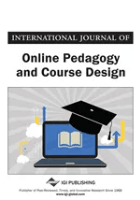
International Journal of Online Pedagogy and Course Design
Fostering collaboration in online learning.The International Journal of Online Pedagogy and Course Design, published by IGI Global, serves as a vital resource for researchers, educators, and practitioners interested in the integration of technology in education. Since its inception in 2017, this journal has focused on the latest advancements in online teaching methodologies, course design, and assessment frameworks, contributing to the dynamic field of educational technology. It is indexed in Scopus and currently ranks Q4 in the Education category, reflecting its growing influence within the academic community. The journal provides an invaluable platform for sharing innovative research and practical insights that enhance online learning experiences, crucial in today’s digitally-driven educational landscape. With an ISSN of 2155-6873 and E-ISSN of 2155-6881, the journal is dedicated to fostering a collaborative environment where ideas and practices in online pedagogy can thrive.
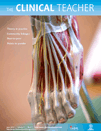
Clinical Teacher
Cultivating Knowledge for Future PractitionersThe Clinical Teacher is a leading journal published by WILEY, dedicated to fostering excellence in medical education and enhancing the skills of healthcare educators. With an ISSN of 1743-4971 and an E-ISSN of 1743-498X, this esteemed publication has gained recognition for its practical insights and innovative approaches, particularly in the realms of Teaching and Assessment within the medical field. Since its inception in 2006, it has maintained a notable impact within its categories, ranking Q3 in Medicine (miscellaneous) and an impressive Q1 in Review and Exam Preparation as of 2023. The journal's commitment to advancing educational practices is reflected in its exceptional Scopus ranking of #1 in the Nursing Review and Exam Preparation category, placing it in the 87th percentile of its peers. Although not open access, The Clinical Teacher serves as an invaluable resource for researchers, educators, and healthcare professionals focused on improving the learning experiences of future medical practitioners. With continued contributions from eminent figures in the field, this journal stands as a vital platform for the dissemination of knowledge and the evolution of teaching methodologies in clinical settings.